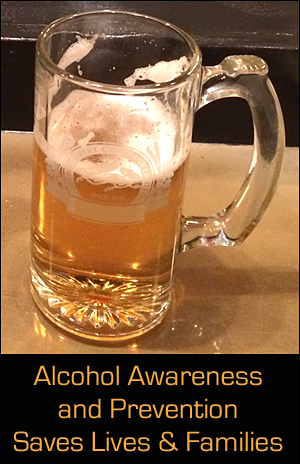For nearly 30 years, the National Council on Alcoholism and Drug Dependence (NCADD) has been working to educate the public on the perils of alcoholism and substance abuse. NCADD’s goal is to increase awareness of the public health issue of underage drinking, while reducing the stigma associated with seeking help for these matters.
 The Centers for Disease Control and Prevention estimates that the total cost of alcohol related problems is $223 billion. This figure includes healthcare expenses resulting from alcoholism, such as emergency room visits and treatment, the loss of productivity in the workplace, law enforcement and court costs. Many experts feel that substance abuse and addiction has become a public health crisis.
The Centers for Disease Control and Prevention estimates that the total cost of alcohol related problems is $223 billion. This figure includes healthcare expenses resulting from alcoholism, such as emergency room visits and treatment, the loss of productivity in the workplace, law enforcement and court costs. Many experts feel that substance abuse and addiction has become a public health crisis.
America’s youth face a difficult challenge in avoiding alcoholism and substance abuse issues. There are many reasons why kids turn to drugs and alcohol, such as peer pressure, depression and anxiety, or stressful school and home situations. Teenagers are four times more likely to become alcohol dependent if they experiment with the substance before the age of 15.
Children who grow up with a parent or parents who suffer from addiction issues are at a higher risk of developing substance abuse problems themselves. Sadly, there is also a greater likelihood for physical abuse or domestic violence in homes where alcoholism is a factor. Additionally, families where there is one or more alcoholic suffer from poorer overall health than families without these issues.
5 Underage Drinking Statistics
- The number one drug of choice for kids in the United States is alcohol
- More than 3 college-aged kids are killed every single day due to alcohol related injuries
- In the United States, the financial cost of underage drinking totals more than $60 billion a year
- Alcohol and alcohol related accidents kill more kids each year than all other illegal substances combined
- It’s estimated that 7,000 children in the United States under the age of 16 try alcohol for the first time each day
Since so much of underage drinking goes unnoticed by parents and teachers, it’s vital that adults be aware of this increasing problem. Parents can help by staying active and present in their children’s lives. Research has shown that continued parental involvement in their children’s lives results in a lower level of drinking when kids reach middle and high school age.
Education and prevention are keys for success. A little bit of information can help a child bypass a lifetime of difficulties, while early intervention for kids who’ve already started drinking has proven to be highly beneficial.
Every year, April is Alcohol Awareness Month, and throughout the month, local NCADD organizations host activities focused on alcohol education and prevention. These events are meant to encourage families and individuals to learn about alcohol related issues and provide information for treatment facilities and programs for anyone who needs them.





